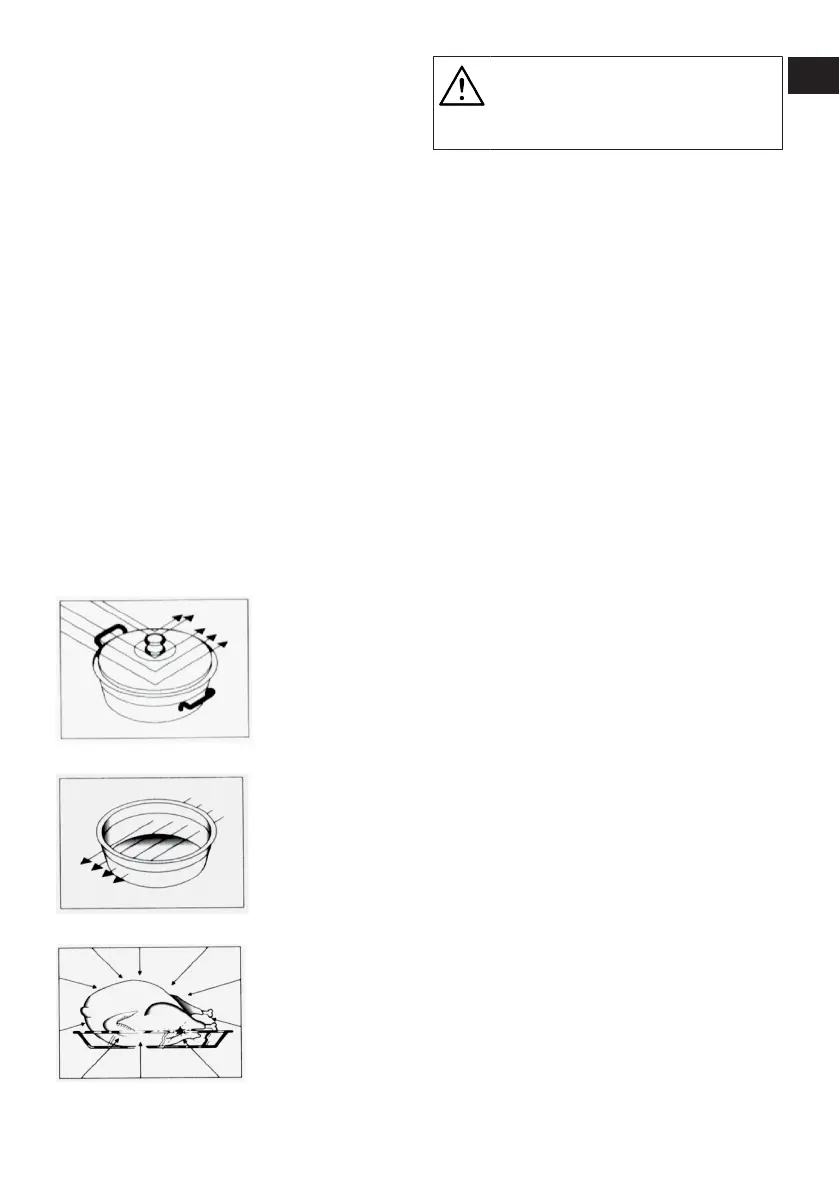Grundig GEKW12401B handleiding
Handleiding
Je bekijkt pagina 35 van 108

EN / 35
Why does food get hot?
• Most foods contain water, and water
molecules vibrate when exposed to mi-
crowaves. The friction between the mo-
lecules creates the heat that warms the
food, defrosts the frozen goods, cooks or
keeps the warmth. Because of the rising
heat inside the food
• Food can be cooked with little to no oil at
all;
• Defrosting, heating or cooking is a lot
faster in a microwave than it is in tradi-
tional ovens;
• The vitamins, minerals and nutrients are
kept inside the food;
• The natural colour and flavour of the
food does not change.
Suitable containers for microwave ovens
Microwaves can pass through porcelain,
glass, cardboard or plastic, but not metals.
Therefore, metal containers or containers
with metal parts cannot be used in a mi-
crowave oven.
Microwaves are reflected from metal...
...but go through glass or porcelain...
...and are absorbed by foods.
Fire risk!
Never put your metal or metal
coated containers into the mi-
crowave oven.
• Microwaves cannot penetrate metal. Mi-
crowaves will reflect off any metal ob-
jects in the oven causing dangerous
electric arcing. Most heatproof non-
metallic containers are suitable for use
in a microwave oven. But some contain-
ers may include inappropriate material
for use in a microwave oven. To determ-
ine if a container is suitable for a mi-
crowave, you may use the following test:
• Place the empty container you want to
test and another container filled with
water inside the oven.
• Run the oven at high power for one
minute. If the water is warm and the
container you are testing is cold, then
the container is suitable for the mi-
crowave.
• On the other hand, if the water is cold
and the container next to it gets hot, then
microwaves have been absorbed by the
container and this container is not suit-
able for microwave use.
Glass containers
• Do not use thin glass or lead crystal con-
tainers. Heatproof containers are suit-
able for microwave ovens. But do not
use fragile glass containers like water
and wine glasses, materials of which can
be broken when heated, in the mi-
crowave oven.
Plastic containers
• Do not hold containers and dishes made
of plastic or melamine in the microwave
for too long; that goes for the plastic
bags used to hold frozen food as well.
The reason behind that is, the heat of a
hot meal will eventually melt and deform
the material. Use these types of material
in the microwave for just a limited
amount of time.
EN
IT
Bekijk gratis de handleiding van Grundig GEKW12401B, stel vragen en lees de antwoorden op veelvoorkomende problemen, of gebruik onze assistent om sneller informatie in de handleiding te vinden of uitleg te krijgen over specifieke functies.
Productinformatie
| Merk | Grundig |
| Model | GEKW12401B |
| Categorie | Niet gecategoriseerd |
| Taal | Nederlands |
| Grootte | 10252 MB |







